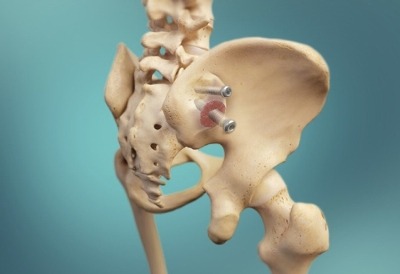
Sacroiliac joint fusion has progressed markedly over the past five years. Positive results—the majority involving SI-Bone’s Ifuse device—have been reported in a growing number of studies. Interim results presented at the Society for Minimally Invasive Spine Surgery Annual Meeting (SMISS; October 13–15, Las Vegas, USA) suggest that combining sacroiliac joint fusion with decortication and grafting may result in faster arthrodesis.
The investigators noted a paucity of research on time-to-fusion for minimally invasive sacroiliac fusion. Referencing two studies in particular, the researchers observed relatively small rates of fusion at one year amongst what literature they could find. The current study aims to evaluate the rate of fusion following sacroiliac joint fusion with decortication and grafting at 12 and 24 months.
The researchers sent thin-slice computed tomography (CT) scans taken at one year to an independent laboratory (Medical Metrics) for evaluation of arthrodesis. Nineteen patients who had “received sacroiliac fixation with threaded implant(s) after undergoing decortication and bone-graft insertion” (SImmetry, Zyga) were enrolled in the prospective, multicentre study, in advance of 12-month follow-up. Experienced radiologists evaluated fusion defined as “presence of a continuous segment of solid bridging bone” extending from the sacrum to the ilium. The researchers also recorded numerical pain scale scores and adverse events.
At twelve months, 74% of participants (14/19) had solid fusion, while 5% (1/19) had possible fusion. Of those joints fused, 86% showed arthrodesis “within the area of decortication”. Pain reduction was observed in all patients, averaging 72% improvement according to numerical reasoning scale scores. From a baseline of 7.9, the mean score at 12 months was 2.2; a reduction of 5.7.
The authors conclude that “decortication and bone grafting may contribute to earlier fusion than seen in other trials”. Comparisons are limited because of the lack of research on time-to-fusion following minimally invasive sacroiliac joint fusion. The research does, however, demonstrate successful arthrodesis and significant pain reduction in this cohort. Twenty-four month fusion results are due to be presented at ISASS17 (12–14 April; Boca Raton, USA).













